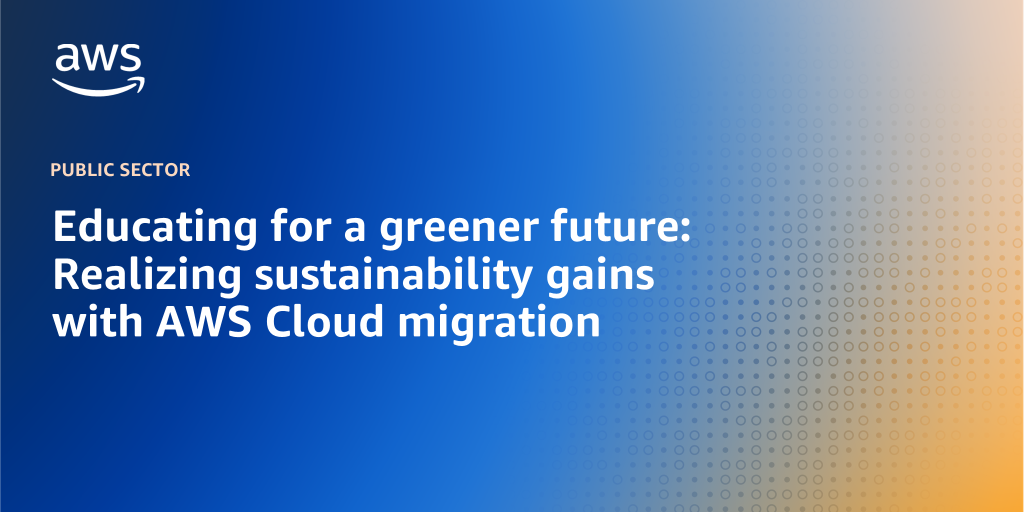AWS Public Sector Blog
Category: Education
Unlocking student success with generative AI: How Panorama Education built Solara on AWS
With over a decade of experience supporting more than 2,000 school districts across North America, Panorama Education had already built powerful tools for integrating academic, attendance, behavior, and life skills into one unified view of student progress. To unlock the value of that data securely, Panorama built Solara, a generative AI platform built on AWS. Solara is designed to help educators make sense of student data faster, design personalized student improvement plans, and reduce administrative burden while maintaining trust and data privacy at scale.
Indiana University streamlines social science research with secure automated transcription on AWS
To help researchers reclaim their time and focus on discovery, Indiana University developed a secure, scalable, and cost-effective Automated Transcription Service (ATS) built on AWS. Since launching, the service has supported nearly 60 projects across 16 departments and has become a model for how universities can use cloud-native tools to affordably streamline research workflows and protect sensitive data.
From local servers to global impact: How Learning Upgrade uses AWS to reach millions of learners in need
Learning Upgrade worked with AWS to modernize its platform and ultimately migrated fully to the cloud. This strategic shift empowered Learning Upgrade to scale globally, respond faster to new opportunities, and better serve learners in dynamic, resource-constrained environments. Read this post to learn more.
Highlights from the 2025 AWS Summit Washington, DC keynote
Cloud infrastructure expansion, agentic AI advancement, and national security initiatives took center stage today during the keynote of the AWS Summit Washington, DC. The annual gathering in the nation’s capital showcased the continued commitment of AWS to public sector innovation and digital transformation.
A year of progress: AWS update on the $50 Million Generative AI Impact Initiative for public sector
Last year, AWS launched the AWS Public Sector Generative Artificial Intelligence (AI) Impact Initiative, a two-year, $50 million investment designed to help public sector organizations accelerate innovation using AWS generative AI services. Today, we’re excited to share the remarkable progress we’ve made and highlight how organizations are utilizing AWS technologies to transform operations and deliver better outcomes for the communities they serve.
Customizing isolated JupyterLab environments in Amazon SageMaker Studio
This post demonstrates how to enhance security and compliance in an isolated SageMaker JupyterLab environment by implementing two key customizations: configuring download restrictions and implementing secure Python package installation through AWS CodeArtifact.
Educating for a greener future: Realizing sustainability gains with AWS Cloud migration
To understand how migrating to AWS can help educational institutions meet their sustainability goals, we first need to unpack the environmental impact of IT operations. That means examining the actual carbon math behind IT and where emissions really come from.
University of British Columbia Cloud Innovation Centre: Prototyping generative AI solutions using AWS
The University of British Columbia (UBC) Cloud Innovation Centre (CIC) has become a hub for innovation by prototyping generative AI applications in collaboration with public sector sponsors. This post highlights how the UBC CIC uses AWS to accelerate generative AI development, sharing lessons learned, tools used, and actionable insights you can apply to your projects.
Doing more with less in higher education: How institutions drive efficiency with AI and automation on AWS
Forward-thinking higher education leaders are using AI and automation from AWS to transform their operations while reducing costs. These institutions aren’t just adopting new technology—they’re reimagining core processes to create ongoing improvements that enhance both operational efficiency and the student experience. Read this post to learn more.
Transforming student wellbeing support with Amazon Bedrock and SXP.ai
SXP.ai, an innovative AI company, is transforming how universities support their students through ethical generative AI powered by AWS through Amazon Bedrock. By combining cognitive behavioral therapy techniques with advanced generative AI capabilities, SXP.ai has created a solution that provides 24/7 personalized support while maintaining the highest standards of trust and integrity. Reade this post to learn more.









